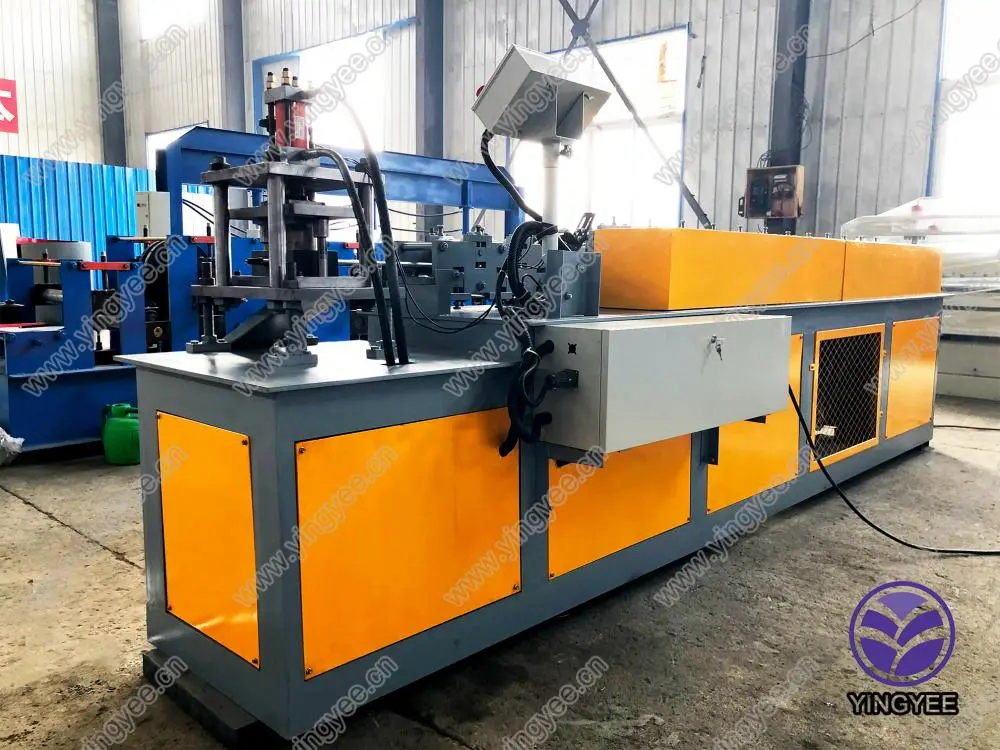
The Role of C-Shaped Steel Purlin Roll Forming Machines in Modern Construction
In the rapidly evolving construction industry, efficiency and durability are paramount. One of the key components that contribute to these elements is the steel purlin. C-shaped steel purlins, in particular, are widely utilized due to their strength, lightweight design, and versatility. As a result, the demand for effective, high-speed manufacturing processes for these products has led to the development and proliferation of C-shaped steel purlin roll forming machines.
What is a C-Shaped Steel Purlin?
C-shaped steel purlins are horizontal beams used in construction to support roofing and flooring systems. Their unique shape, resembling the letter C, provides excellent structural integrity and load-bearing capabilities while minimizing weight. These purlins are frequently made from galvanized steel, giving them enhanced corrosion resistance, which is essential for outdoor applications.
The Importance of Roll Forming Technology
Roll forming is a manufacturing process that involves feeding a continuous strip of metal through a series of rollers to gradually shape it into the desired profile. This method is especially suited for producing long lengths of uniform sections, making it an ideal choice for creating C-shaped steel purlins. The use of roll forming machines ensures that purlins are produced at high speeds while maintaining tight tolerances and consistent quality.
Advantages of C-Shaped Steel Purlin Roll Forming Machines
1. High Production Efficiency Roll forming machines can produce purlins quickly, significantly reducing the time required for manufacturing compared to traditional methods. This increased efficiency allows construction projects to meet tight deadlines and reduce labor costs.
2. Cost-Effectiveness The high rate of production combined with minimal waste generation makes roll forming an economically viable option. The machines can operate with a wide range of material thicknesses, which helps optimize the use of raw materials.

3. Superior Structural Quality The precision of roll forming ensures that each C-shaped purlin meets the required specifications. This accuracy leads to better fitting components, enhancing the overall stability and safety of the structure.
4. Customization Options Modern roll forming machines can be easily adjusted to accommodate different sizes and shapes of purlins. This flexibility allows manufacturers to meet varied client specifications without significant downtime for machine reconfiguration.
5. Automation and Ease of Use Many C-shaped steel purlin roll forming machines are equipped with advanced automation features, enabling a more straightforward operational process. These machines often have computer-controlled systems that simplify adjustments, monitor production quality, and minimize human error.
Applications in the Construction Industry
C-shaped steel purlins are integral to numerous construction applications. They are commonly found in the creation of steel buildings, storage facilities, and industrial warehouses. Their lightweight nature allows for easier handling and installation, making them a popular choice for roofing systems to support cladding and insulation.
The rise of green building practices and energy-efficient structures has also bolstered the demand for steel purlins. These materials not only provide durability but also help in achieving better thermal performance when used with proper insulation materials.
Conclusion
The C-shaped steel purlin roll forming machine stands as a testament to the innovation within the construction sector. Its ability to produce high-quality, precise, and customizable steel purlins in a cost-effective and timely manner has made it an indispensable tool for manufacturers. As the construction industry continues to grow and evolve, the importance of such machinery will undoubtedly increase, further solidifying the role of C-shaped purlins in modern building practices. With advancements in technology, we can expect even greater efficiencies and capabilities from these machines in the years to come, driving the construction industry towards a more sustainable and efficient future.